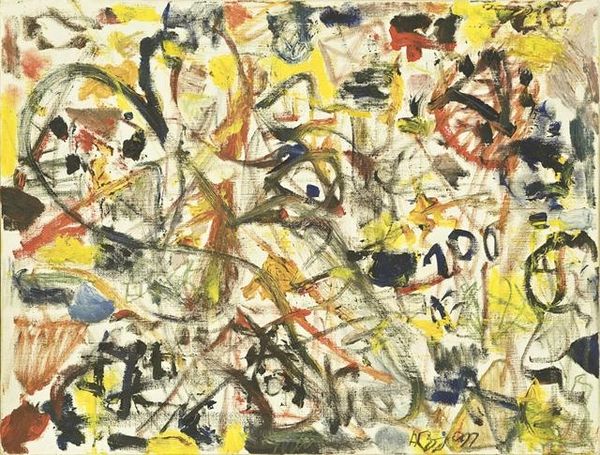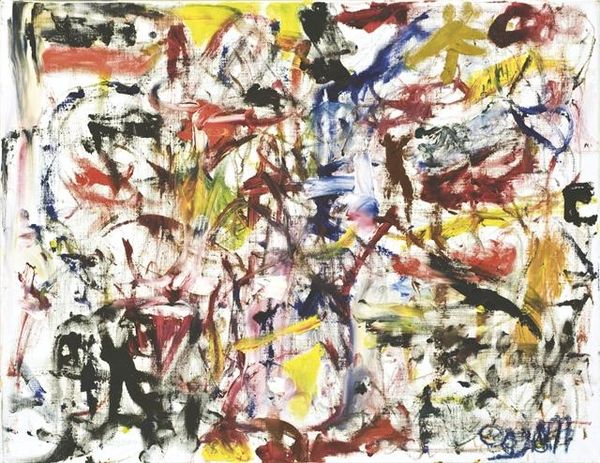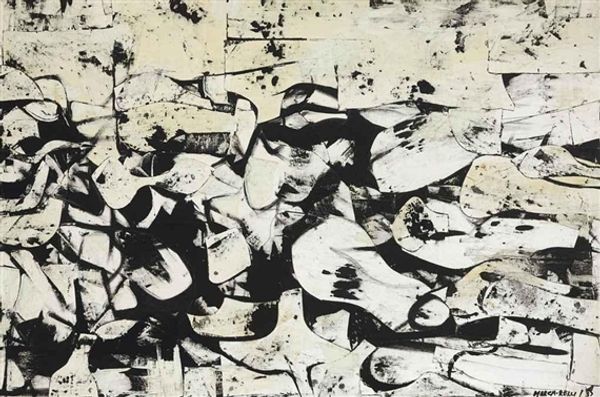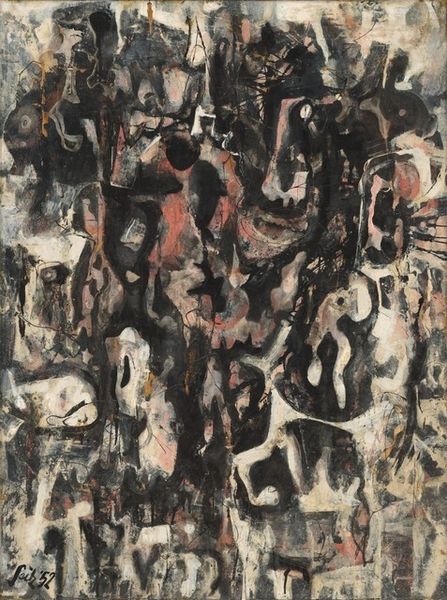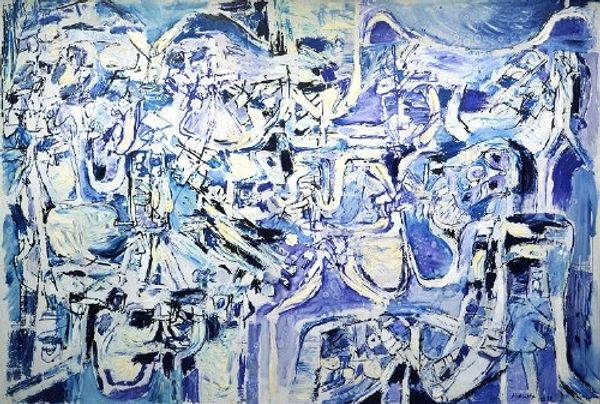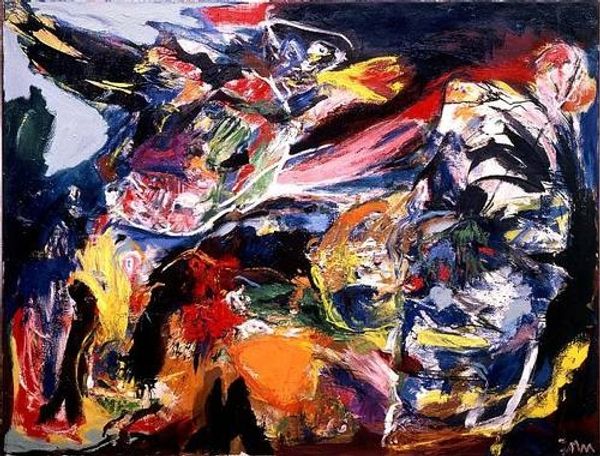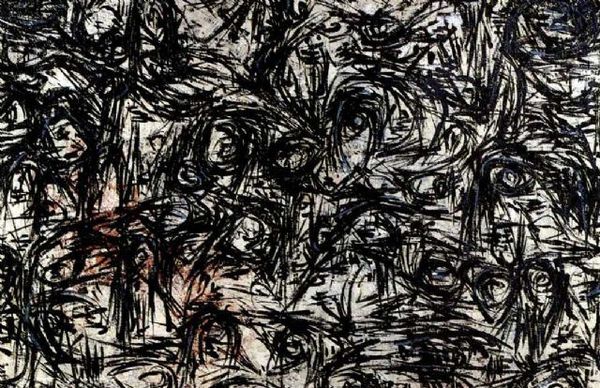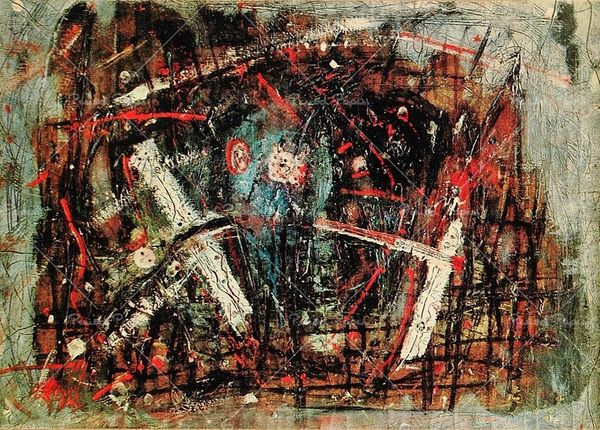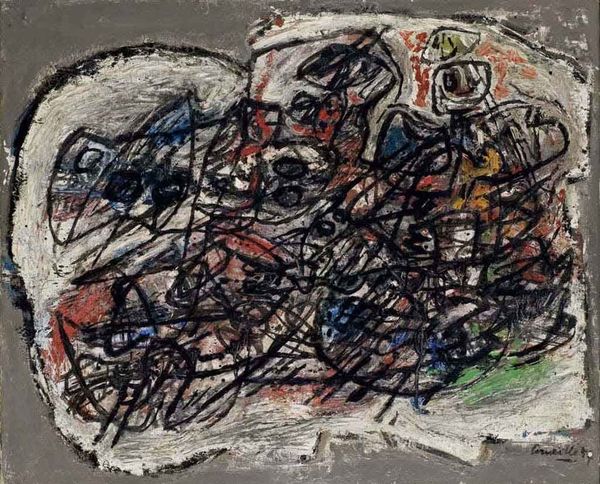
painting, oil-paint
#
abstract-expressionism
#
abstract expressionism
#
painting
#
oil-paint
#
acrylic on canvas
#
abstraction
Copyright: Nicolas Carone,Fair Use
Editor: Here we have Nicolas Carone's "Hyperbola," an oil painting from 1954. It's a whirlwind of black and white with some hints of red, all swirling together. Honestly, it feels chaotic and energetic to me. What do you see in this piece? Curator: Immediately, I recognize the language of Abstract Expressionism. But beyond the surface, there’s a visual dialogue at play here, echoing ancient mythologies. Notice how the contrasting blacks and whites vie for dominance. Does this visual tension evoke any symbolic struggle for you? Editor: I see the tension, yes, but struggle… I’m not so sure. It feels more like a dance to me, albeit a frenzied one. Curator: A dance! I love that. Consider the era, though. The post-war anxiety was palpable. Artists were grappling with expressing trauma and the fragility of human existence. Could this frantic dance also be interpreted as a symbolic struggle against chaos, against meaninglessness? Look at how the pale reddish central element anchors all that frenzy: does it resemble a distorted representation of a human form? Editor: I can see a figure now that you mention it! Maybe that touch of color offers some hope amid all the turmoil? Curator: Precisely! The use of abstract forms allows Carone to tap into primal emotions, universal experiences. What personal associations come up for you? Editor: It reminds me of a bustling city, full of fragmented stories and fleeting encounters. It's overwhelming, but also alive. Curator: Beautifully put! The city, a microcosm of humanity’s complexities. Editor: I never would have considered all those symbolic layers. I’ll definitely look at Abstract Expressionism differently now! Curator: That’s the power of art, isn't it? To open up new avenues of seeing and feeling, linking our personal experiences to broader cultural narratives.
Comments
No comments
Be the first to comment and join the conversation on the ultimate creative platform.
